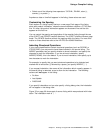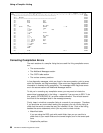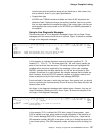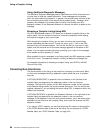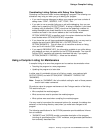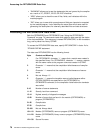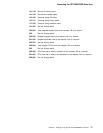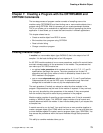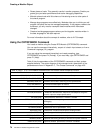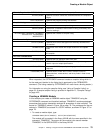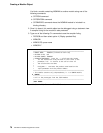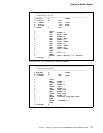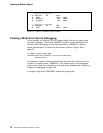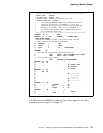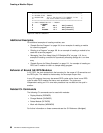
Creating a Module Object
Chapter 7. Creating a Program with the CRTRPGMOD and
CRTPGM Commands
The two-step process of program creation consists of compiling source into
modules using CRTRPGMOD and then binding one or more module objects into a
program using CRTPGM. With this process you can create permanent modules.
This in turn allows you to modularize an application without recompiling the whole
application. It also allows you to reuse the same module in different applications.
This chapter shows how to:
Create a module object from RPG IV source
Bind modules into a program using CRTPGM
Read a binder listing
Change a module or program
Creating a Module Object
A module is a nonrunnable object (type *MODULE) that is the output of an ILE
compiler. It is the basic building block of an ILE program.
An ILE RPG module consists of one or more procedures, and the file control blocks
and static storage used by all the procedures in the module. The procedures that
can make up an ILE RPG module are:
an optional main procedure which consists of the set of H, F, D, I, C, and O
specifications that begin the source. The main procedure has its own LR
semantics and logic cycle; neither of which is affected by those of other ILE
RPG modules in the program.
zero or more subprocedures, which are coded on P, D, and C specifications.
Subprocedures do not use the RPG cycle. A subprocedure may have local
storage that is available for use only by the subprocedure itself.
The main procedure (if coded) can always be called by other modules in the
program. Subprocedures may be local to the module or exported. If they are local,
they can only be called by other procedures in the module; if they are exported
from the module, they can be called by any procedure in the program.
Module creation consists of compiling a source member, and, if that is successful,
creating a *MODULE object. The *MODULE object includes a list of imports and
exports referenced within the module. It also includes debug data if you request this
at compile time.
A module cannot be run by itself. You must bind one or more modules together to
create a program object (type *PGM) which can then be run. You can also bind one
or more modules together to create a service program object (type *SRVPGM). You
then access the procedures within the bound modules through static procedure
calls.
This ability to combine modules allows you to:
Copyright IBM Corp. 1994, 1999 73



